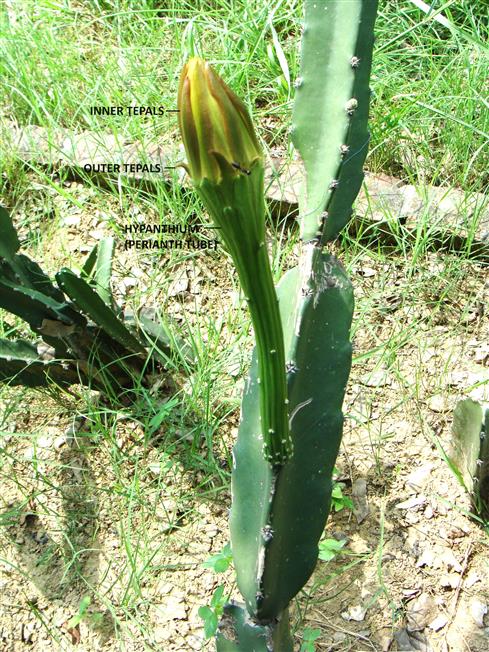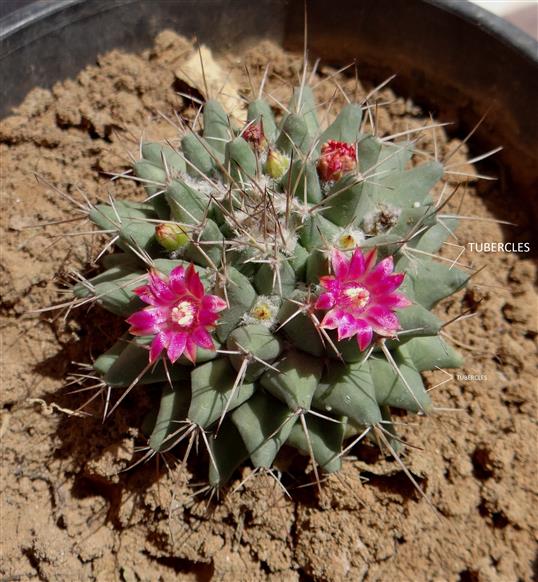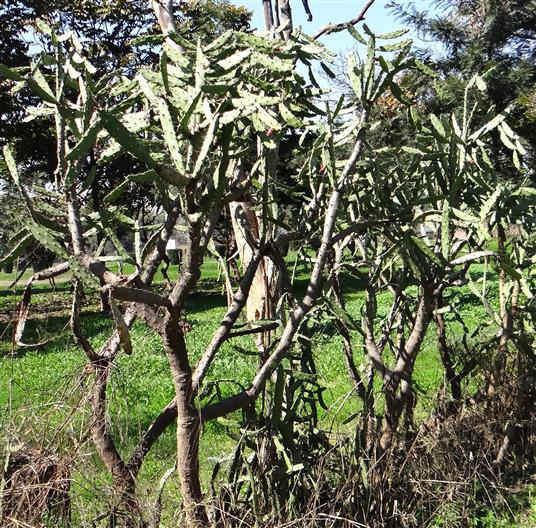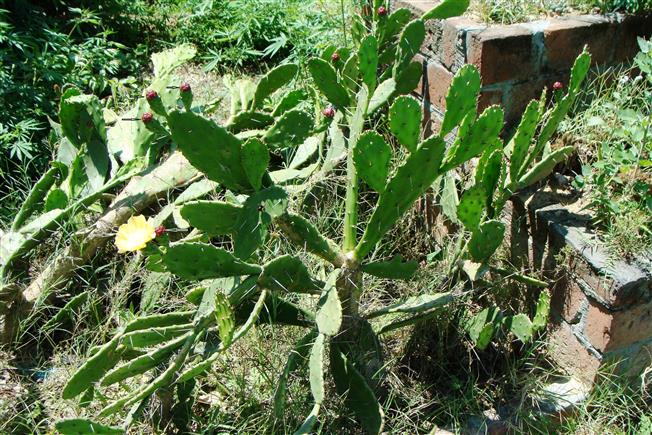CACTACEAE
Fleshy perennials, shrubs, trees or vines, terrestrial or epiphytes. Stems jointed, terete, globose, flattened or fluted, mostly leafless and variously spiny. Leaves usually reduced to small scales in the axils of which is an area, the areole, bearing a tuft of hairs and often prickles and bristles with barbed hairs (glochidia). Leaves alternate, flat or subulate to terete, vestigial or entirely absent; spines, glochids (easily detached, small, bristle- like spines) and flowers always arising from cushion-like axillary areoles (modified short shoots). Flowers solitary, showy, rarely clustered and stalked (e.g., Pereskia), bisexual, rarely unisexual, actinomorphic, occasionally zygomorphic, usually epigynous; rarely in panicles. Receptacle tube (Hypanthium or Perianth tube) absent or short to elongate, naked or invested with leaflike bracts, scales, areoles and hairs, bristles or spines. Perianth segments usually numerous, 5-50+, in a sepaloid to petaloid series, usually united and tubular at base; limb salver-shaped, funnel-shaped or rotate. Stamens almost always very numerous (50-1500+) arising from throat and perianth tube, rarely from receptacle; anthers bithecous, dehiscing longitudinally. Ovary inferior (sunken in stem) rarely superior, 1-locular, ovules usually numerous on 3-many projecting parietal placentas (rarely basal); style 1; stigmas 2-as many as placentas, stellately spreading. Fruit a 1-celled more or less fleshy berry, very rarely dehiscent or in one species a circumciss capsule. Seeds usually numerous, often arillate or strophiolate.
150 genera and about 2047 species



